Updated! So now we’re in the time of Covid-19 and things are different. We haven’t traveled at all, except to my in-laws’ house in upstate NY and we are not flying. But you can travel safely, just check your airline carrier’s updated rules – traveling with Type 1 Diabetes should really be the same. Carry extra supplies, in case you need to quarantine when you get to your destination or you cannot find certain medications and supplies. Be safe.
So we just got back from a 2 week trip to Israel which was wonderful. As a parent of a child with Type 1 Diabetes, I wanted to share about how we handled traveling with him. We prepped a lot, made sure we had enough supplies, dealt with the TSA, going though screenings for trains and other attractions. Did we have hiccups? Absolutely. As much as I wish it wasn’t, Type 1 Diabetes is always on my mind and it’s a major presence our lives. But being prepared definitely helped and the goal of this blog post is to help parents avoid any complications while flying abroad. Traveling Internationally with A Child With Type 1 Diabetes
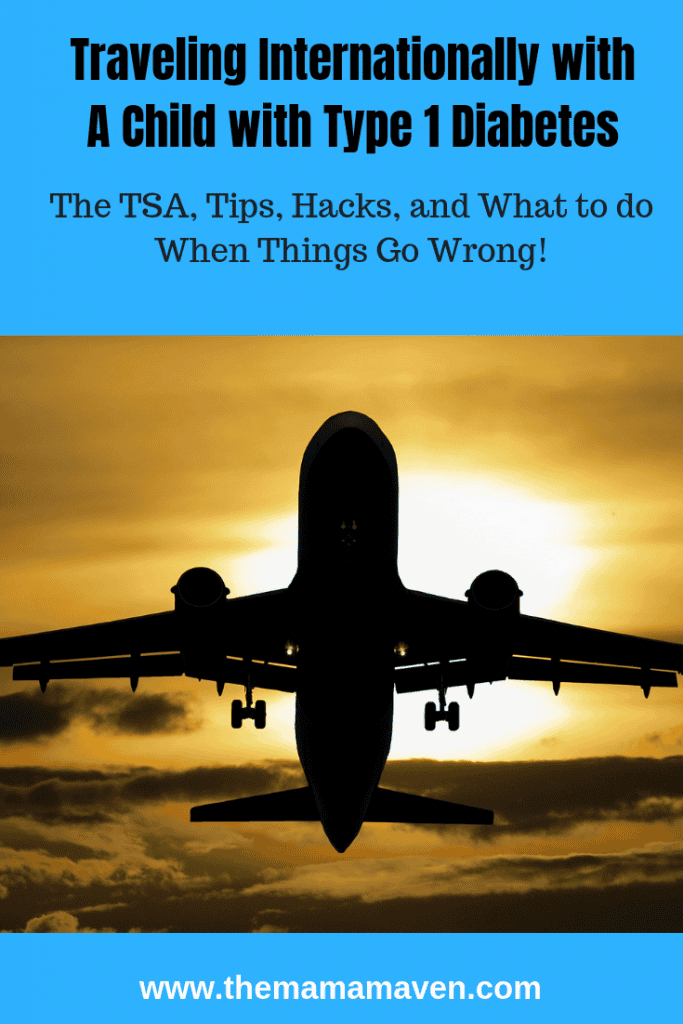
Traveling Through the Airport Security in the US
I contacted TSA Cares Hotline (1-855-787-2227) on the phone the day before my flight and spoke to a lovely representative, Ashley. She recommended that I call THREE days before a flight, but she would help me for this. Here’s a link to the TSA Disabilities and Medical Conditions page (although Type 1 Diabetes isn’t mentioned here) and a link to a card that you can print out — however, I would still ask your endocrinologist for a letter, as on the way back a foreign airport isn’t going to recognize that. She told me that I should ask for my son to be hand-screened, as he wears two medical devices (an Omnipod Insulin Pump and a Dexcom CGM monitor). While one of the devices can go through an X-Ray device (I believe the Dexcom can), the Ominipod Insulin pump could be de-activated if he goes through the scanning machines). However, all pump, Dexcom, and Type 1 Diabetes supplies could go through the scanners. She gave me the name of the TSA Manager on duty who was informed about my son’s condition and would be there to escort us through the process. I was to call him 30 minutes before we got to the airport and he was going to be there waiting for us.
However, the next day when we left for the airport, I could not get the manager on the phone. My confidence in TSA Cares shaken, I decided to ask at the El Al check in, as we checked in. While they were nice and sympathetic, they weren’t able to help or give me direction.
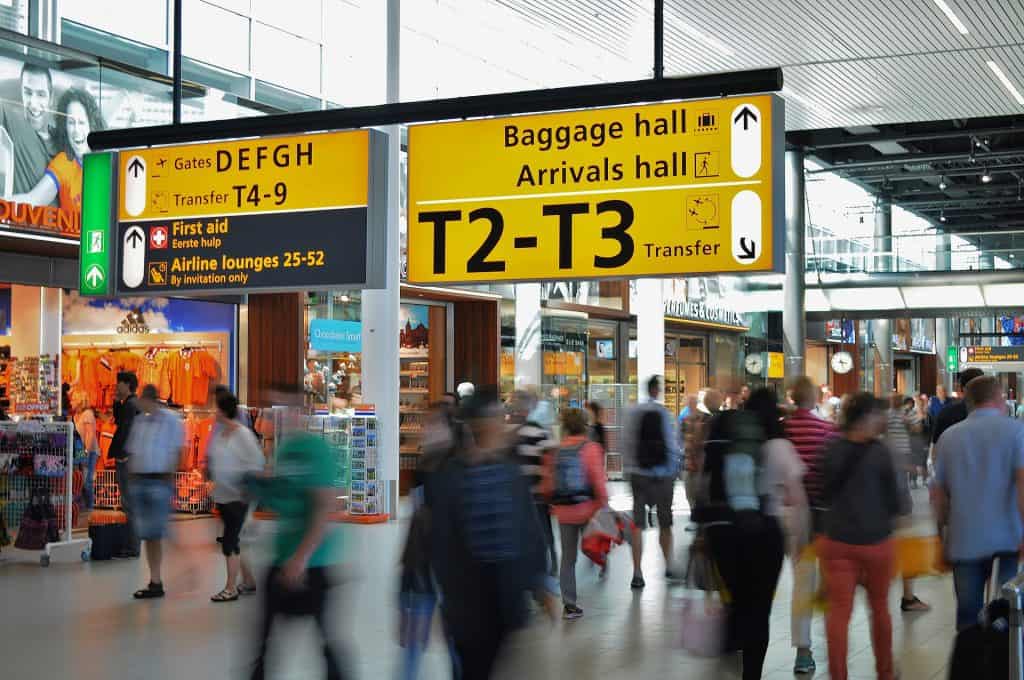
.
After our luggage was checked, we headed out to the TSA lines. I approached a TSA agent named Gregg Parris, and told him about my son and asked his advice. He confirmed that the TSA manager that I was looking for was actually off, but he could help me. He was very professional and took the time to escort us through the machines. The rest of my family went through the screening and I stayed with my son. I showed the TSA agent screening my son where his devices were, then I went through my own screening. While I had a letter confirming my son’s diagnosis, I was not asked to show it. The experience was a good one and I felt very valued. Thank you to the TSA and officer Gregg Parris! And yes, I made sure to tweet to the TSA about Officer Parris’ compassion and professionalism when I got back!
Now in Israel — we got into the country fine. No issues coming into Israel with his diabetes supplies. During out trip there were a few times we encountered scanning devices. For privacy sake, I’m not going to share where (if you are a T1D parent and you are going to Israel, email me and I’ll share where). We encountered 3 scanners and what I did was that I talked to the soldiers and showed them the devices on my child’s body and explained why he could not go through the scanners. He was allowed through, though his waist pack and this backpack were searched.
Going Back to the US
When our passports were being checked (before checking our bags), I mentioned my son having Type 1 Diabetes. I was asked if I had proof — luckily I had my letter. A airline supervisor was called over and we were ushered into the line to check our bags. Then when we went through security, I was asked for our letter again and my son and I were put into a special line. The security officers were very understanding and did a hand pat down screening of my son, while I went through the X-Ray machines.
All in all, we found it to be a very easy process and we felt like were treated with respect.
Here are some tips for Flying With A Child with Type 1 Diabetes
- Diagnosis Letter — Have a letter stating that your child (or family member) has Type 1 Diabetes and indicate what devices he wears or if he uses insulin pens or vials for injections. I store the letter in a plastic bag so if things get wet, we’re still fine. We didn’t have this letter on us all the time, but in retrospect, I probably should have had a copy in my wallet just in case.
- Keep Everything Together – Carry all supplies in one bag so you can easily take them out and show them to any security personnel who asks. Keep in mind that they may want to check everything and you should be prepared to do so. If you open your insulin vial or pen, you do not need to refrigerate it. I took three vials and opened them so I wouldn’t have to worry about refrigeration. Since it was winter time and I knew that Israel was not going to be as cold as New York, I was okay with having the open vials. If you are going to a hotter climate, get a Frio and keep your unopened insulin in it. The Frio is great because all you do is wet the insert and it makes the pouch cooler. It’s not ice cold, but will help in hot climates.
- Diabetes Supplies – Make sure you have more than enough supplies. After our trip to Upstate NY for the Christmas Holidays and how I didn’t have enough supplies, I took many more this time. I fit it all into an insulated lunchbox. Take extras. You don’t want to have repeated pump or Dexcom fails and be caught short.
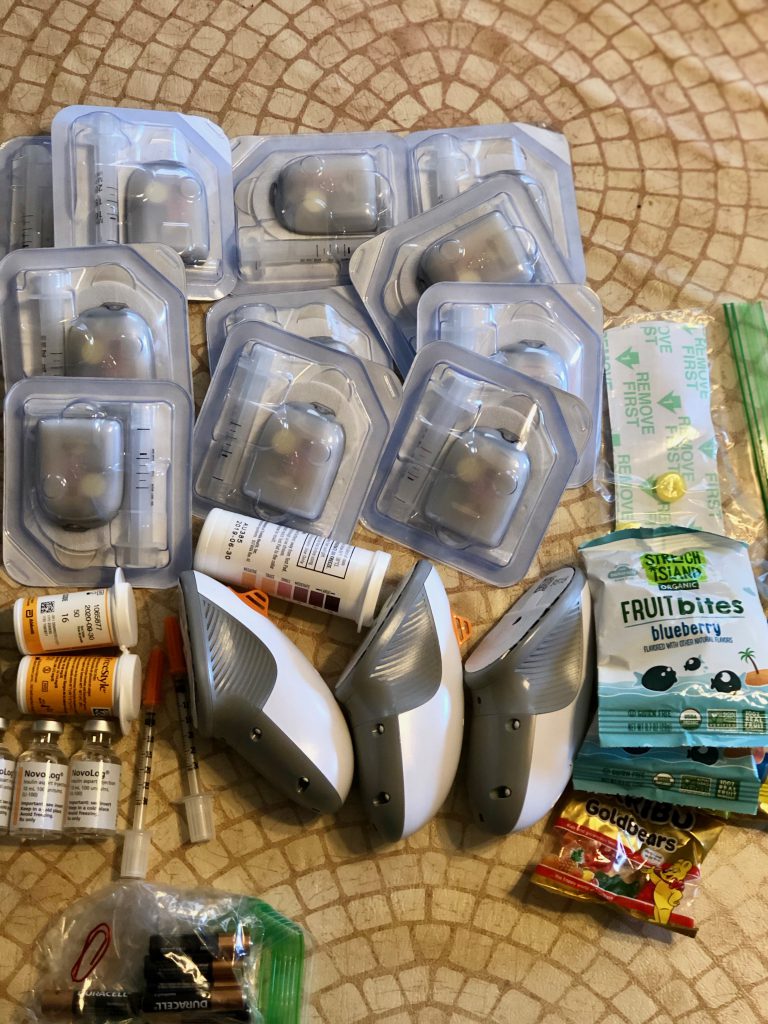
In my kit:
11 insulin pods
3 Dexcom G6 sensors
1 vial of Ketone Strips
Fruit Snacks and candy for lows
Batteries for the Omnipod PDM
A paperclip for shutting off a “screaming” Omnipod
Diabetes testing strips
Adhesive tape
Extra tips for Genteel Lancing Device
Syringes in case the Omnipod PDM malfunctions and my son has to give himself insulin manually
I also added my sons’ medications so I had everything together
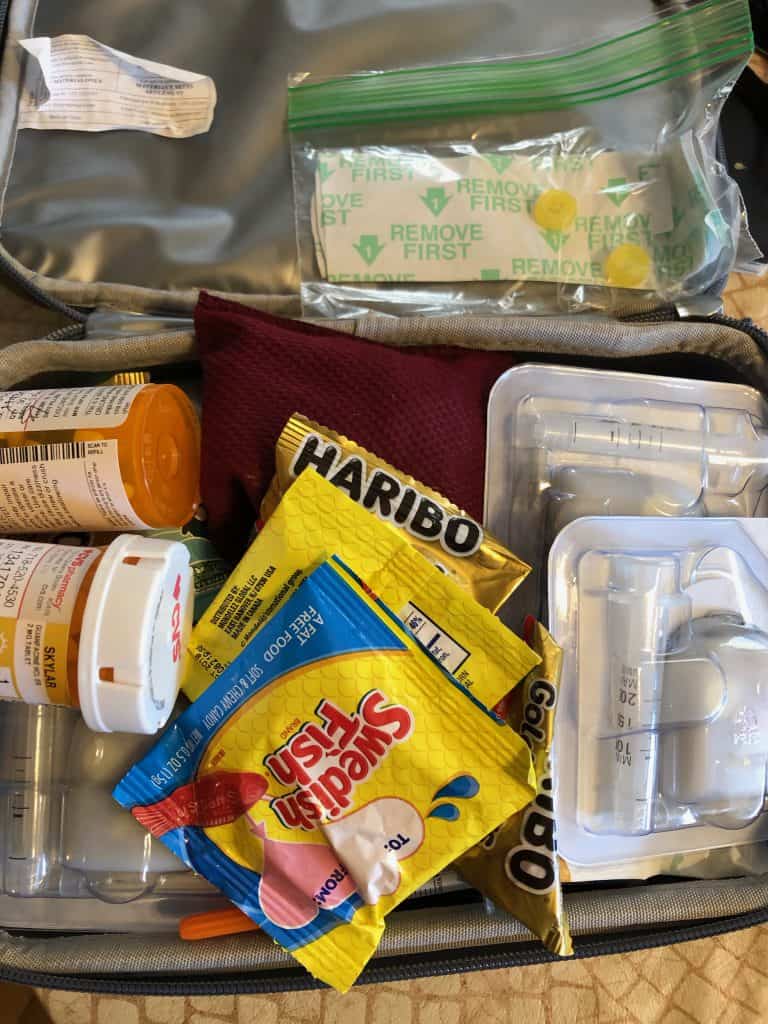
4. Continuous Glucose Monitor – If your child wears a Dexcom Continuous Glucose monitor and uses a cell phone to monitor his Dexcom, know that there is a chance that there may be no wifi or service on board and you WON’T HAVE ACCESS to USING IT. I should have used the receiver – we use my son’s iPhone to read Dex and I didn’t have access for the whole long flight. I kept his phone on until the last second — unfortunately he was going low at takeoff, so I gave him some candy to make sure his blood sugar would rise. During the two meals on the plane, I made him do finger pricks and we guessed at the carbs. Luckily it all worked out and he was fine (but yes, I was worried). He tends to over-carb and give himself too much of an insulin dose (and then he goes very low).
5. Keep Basic Supplies on You – Make sure you always have some supplies on you — like an extra insulin pump or two, insulin, candy for lows. You can leave most stuff back at your hotel or AIRBNB, but carry what you would carry with you regularly. We experienced some lows during long hikes and excursions and I was prepared.
5. Low Snacks! Make sure you have plenty of snacks to treat low blood sugars. We use juice boxes to treat lows often, but I couldn’t find any juice boxes in Israel and carrying around a bottle of juice just wasn’t practical. I used candy that I brought from the US, but ran out once we were in Haifa (the second city we visited). However, I was able to find more candy easily. Smarties (the British M & M’s) were great for nudging up stubborn blood sugars.
6. You may want an Israeli Sim Card! If you rely on using your phone to monitor your child’s Dexcom monitor on their phone, you’ll need an Israeli Sim Card. I got two Israeli Sim Cards and I was able to always monitor my son’s phone to see his Dexcom readings. Having two connected phones that were able to be used was terrific – it helped with contacting Airbnb hosts and hotels — as well as each other when we split up in two taxis (we were a group of 8. I used Talk N Save, but there are tons of companies that will rent you a phone or a SIM Card.
7. Sick Day Protocols! When my child with Type 1 Diabetes doesn’t feel well, we have rules we are supposed to follow – as checking if he has ketones and making him drink liquid to get rid of those ketones. On our last night there my son didn’t feel well and was vomiting and had diarrhea. I was sleeping in another hotel room so I didn’t know what was happening. My son’s blood sugar around 285 that night, if I had been in the room I would have also factored that in. The next morning we let my son sleep and when he got up I made him test for ketones (he had between small and trace ketones, so the protocol was to have him drink as much water as possible to get those ketones out of his body). After he drank around 4 cups of water, it seemed to do the trick and he felt much better. I had googled an Urgent Care center just in case — if ketones get very large in a person with Type 1 Diabetes it can get very dangerous and the person can go into Diabetic Ketoacidosis, which is scary and can be life threatening.
8. Have a Back up Plan! On the 2nd full day in Tel Aviv- Yafo, my son was sleeping wildly and kicked an end table. His phone sailed into a cup of water! The phone stopped working! My son had pulled at the lining of his waterproof case and it wasn’t waterproof anymore! I put the phone in rice and took the international sim card out and set up the Dexcom Follow app on my husband’s phone. Luckily it worked, but it was a hassle.
All in all, we had a wonderful trip and we tried not to let my son’s Type 1 Diabetes be the main focus. We let him eat anything he wanted (we just had to guess at the carbs to dose him with insulin) and let him be a kid.
Products We used:
Frio Insulin Cooling Wallet
Lunchbox – here’s a similar one on Amazon.
Candy for Lows – I liked Smarties
I used the small hexagon tubes
Israeli Sim Card — similar to the one I got for both my son’s phone and my phone.
Genteel Gentle Lancing Device — we use this to prick my son’s fingers and I had extra tips with me. I knew I probably could find a finger pricker in a pharmacy if we needed one, but I probably should have had an extra lancing device with me.

Review of Genteel:
Note: I am not a doctor or have medical training. I talk about Type 1 Diabetes from a parent’s point of view. Always consult your endocrinology team if you have any questions. I advocate for my child until he can advocate for himself.
Need to book a flight to take your family on vacation?
Fall in Love with Savings! Save up to $27 off our fees on flights from Cheap-O-Air by using promo code FALL27. Book Now!
Other articles on Traveling with Type 1 Diabetes: https://beyondtype1.org/traveling-with-t1d/
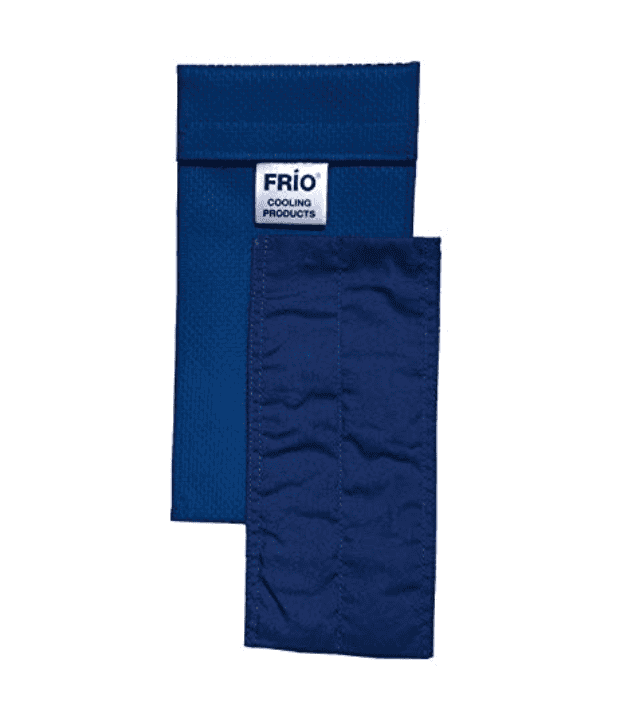





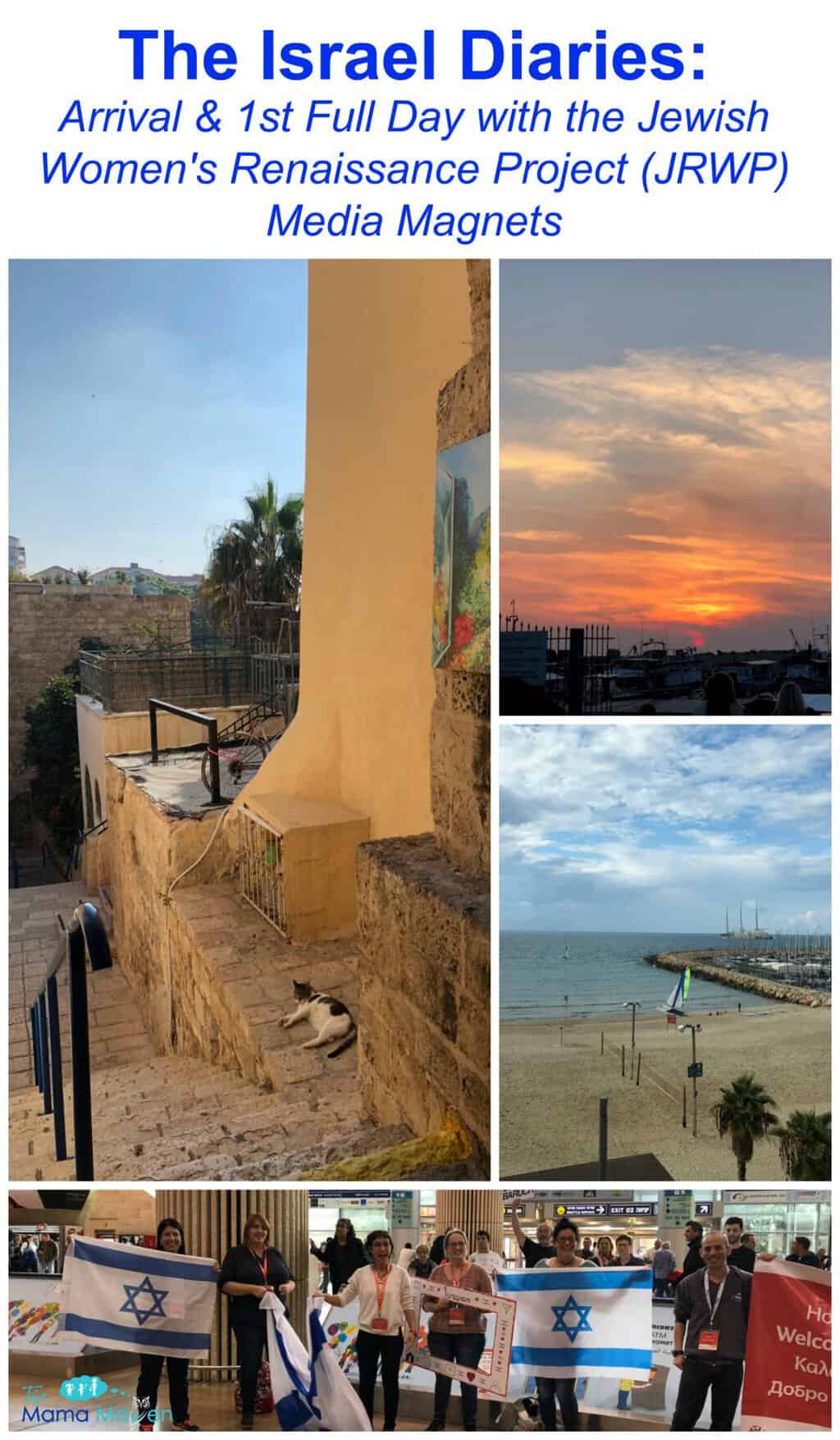

This is a great article about traveling with diabetes. My father has Type One and going through airports can be challenging.